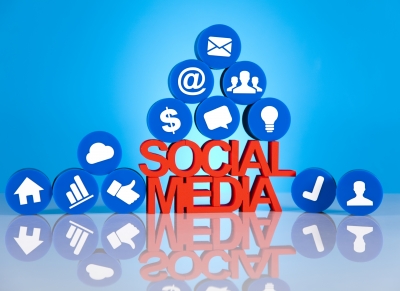The Big Questions about Social Media - Bill Harvey

What we already know about social media is that a large percentage of the population spends a significant amount of time with Facebook. Facebook currently reaches 1.15 billion people each month. The 699 million reached by FB per day spend an average of 28.6 minutes there per day . Then there is Twitter and everything else, all of which is a lot smaller. Advertisers and agencies are testing various ways of leveraging these media and some results are in. Datalogix shows FB lifts ROI however these studies do not control for other media (TV, other digital, in-store, etc.) so the jury is still out. More controlled crossmedia proof will no doubt be forthcoming soon.
So of course the number one question in our industry about social media is how optimally to use it for marketing, meaning what percent of the budget should it get, and tactically what about the creative and all of the other particulars needed for highest ROI activation? This is a long list of sub-questions, boiled down into five at the end of this post.
Entertainment companies have keen interest even more than other verticals. For movies and TV shows the leading question is how to use social media to maximize audience size. Even before social media, the movie Blair Witch in 1999 demonstrated how word of mouth could be stimulated by an Internet hoax so that with only $60K in marketing a movie could hit $29MM in its opening weekend and ultimately gross over $140MM .This suggests there could ultimately be great ROI potential once practitioners unlock the secrets of how to best use social media. Display and video ads have been tested on FB for example and now Google has announced a new plan to embed online video ads in the popular FB timeline feature.
I had suggested to friends at FB that they test True Sponsorship as a natural ad form on FB. True Sponsorship is the gift of free content using only the PBS-like "brought to you by" with no hidden or overt ads or product plugs. Such sponsorship is also known today as owned media aka custom content. FB friend was interested but had long list of his own ideas he is testing first. The idea would be to post advertiser's gift content with entertainment and/or useful information, not brand specific, so that there is affinity between the person and the content via a matching algorithm that reacts to but does not save user text posted on FB as the basis for matching to the advertiser's content. I imagine the best case is where people see it there and want it on their own FB page too because they like the particular content so much, so there would be a mechanism to click to get it on your own page and also to send to all your friends with a single click.
Another True Sponsorship concept I had for FB is The Democracy Channel, a gamified crowdsourcing of solutions to world problems, with a way users can get a piece of that onto their own FB page with a click. The advertiser would sponsor this for the gratitude effect, which translates into ROIs as high as $50 for True Sponsorship.
Getting back to entertainment marketing, Jack Wakshlag, head of Turner research and a leader in the industry's drive for quality, last year presented a wonderful study in which AT&T ad effectiveness was increased by the use of a sync app on tablet synched to the Turner program being concurrently viewed. Jack found that people using social media in relation to TV content being viewed by both parties, tweeting each other or using Facebook or chat during the program, about the program or its ads, did not distract from but enabled engagement with program and ad content. This of course is the Holy Grail for TV marketers. There is also the opposite case where the concurrent use of tablet or cellphone during viewing a TV show is for something that is unrelated not engaging from the POV of the TV network and its advertisers.
Symphony Advanced Media (SAM) is now doing the most in-depth study of these phenomena with its 7000-member national panel representative of U.S. mobile device owners, about 70% of the total population. A unique single integrated passive system measures all four screens, social media, search, and location via GPS, with a survey option as well. In its CIMM study SAM reported the first passively-collected singlesource measurement of concurrent viewing and mobile device use, which is 28% across primetime. Mike Saxon, the product head at SAM, reports informally that FB is the major factor in concurrent TV viewing with social media, dwarfing Twitter. He also notes that distractive concurrent viewing far outweighs the engaging kind, with differences show to show. For example, of course, American Idol makes special use of interactivity via texting and social media, shifting the balance in their favor. Sync apps such as used by Turner and others are likely to be a growing phenomenon as networks learn from SAM and in other ways how deleterious the distractive use of mobile devices is. Networks will then work to counter that distraction by the use of sync apps and other ways of channeling the urge to use social media back into relevancy to the program. As a wise network exec says (not for attribution), "The challenge and opportunity we all see is the benefit of 'related concurrent content' that enables extended engagement." Some sample SAM data can be seen at this link. Since SAM is a client of mine expect to see more SAM data in these posts going forward.
Recently Nielsen and Twitter released findings that when people tweet about a show its ratings immediately go up as if people read the tweets and switched channels into the show. David Poltrack, head of CBS research and well-known major thought leader, smiles as he points out that most tweeting happens during commercials while audiences are temporarily depressed by switchaways, and the audience toward the end of a pod and right afterward is always increasing as switchaway people come back. This would of course make it look as if the tweets caused it, but obviously there is going to be need of more controlled measurement to find out.
The first manifestation of social media in terms of industry thought patterns is the association of buzz with "good". The more buzz the better. Say anything you want about me just spell my name right — an old showbiz saying. Pete Moran, the affable and knowledgeable CEO of General Sentiment, begs to differ. GS specializes in being the best in establishing the valence of sentiment in social media — i.e. is somebody praising or lambasting your brand? Their LYDIA technology is indeed focused there rather than on mere counting while their major competitors have admitted to me uncertainty about how they categorize negative vs. positive vs. neutral emotional sentiment in a social media context. So buzz may not be the best measure of value received from social media, and those who know me can predict I will say ROI is the real measure of course. But along the way to sales I continue to believe as I have all along (before cracking the granular ROI on media code with TRA) that we also need all the interim measures, in order to truly understand what is going on.
David Poltrack reports the interesting case of two shows with wildly different buzz levels. SCI-FI's Sharknado got almost 10X the buzz of CBS's Under The Dome, but Under The Dome got almost 10X Sharknado's rating. There can be studies showing that buzz and ratings generally are correlated but that does not mean they cannot on a case-by-case basis be totally uncorrelated.
Stacey Schulman , Chief Research Officer at TVB and former MIT professor, and former President of the Consumer Experience Practice at IPG, which drove the IPG investment in Facebook, has always been ahead of her time. With Sree Nagarajan, CEO of Colligent, Stacey presented data at the June ARF showing that broadcast is a heavy player in driving social engagement, and suggesting there is some evidence that ratings and social engagement are correlated to some degree at least in the bulk of cases.
Colligent itself is not focused primarily on buzz, but on affinity. Stacey uses the term "generating cultural currency" to include all behaviors related to social media including but not limited to conversations, which is what "buzz" usually connotes. People who engage with your brand based on specific behaviors such as Facebook commenting, photo/video posting, comment liking, re-tweeting, replying to tweets, and hashtagging — what other things do they engage with? Which TV shows, which other brands, which celebrities, which singers, which movies, etc. do those same people who engage with you, also engage with? More on Stacey and her work with Colligent in upcoming issues.
So what are the key questions to be answered about social media:
- What is the ROI value of Buzz and how can it best be measured and used.
- Same for Sentiment.
- Same for Affinity. Can it be integrated with the above two metrics to come up with a unified social metric?
- What other dimensions of social media have ROI value and therefore should be measured and used in an optimal way.
- And of course where we always start and end: how to optimize social media for ROI. Subquestions are budget allocation and activation strategy/tactics for both creative and media. Turner research powerhouse Howard Shimmel points out that as we measure Social ROI, we need to be precise about understanding both the reach of Social campaigns and the impact of Social on those reached.
In upcoming posts (while covering many other subjects) watch for the answers to these questions, and data points hinting at answers as these and other companies continue to collect and analyze data at the cutting edge.
Best to all,
Bill
Bill Harvey is a well-known media researcher and inventor who co-founded TRA, Inc. and is its Strategic Advisor. His nonprofit Human Effectiveness Institute runs his weekly blog on consciousness optimization. Bill can be contacted at bill@billharveyconsulting.com
optimization. Bill can be contacted at bill@billharveyconsulting.com
Read all Bill’s MediaBizBloggers commentaries at In Terms of ROI.
Check us out on Facebook at MediaBizBloggers.com
Follow our Twitter updates @MediaBizBlogger
The opinions and points of view expressed in this commentary are exclusively the views of the author and do not necessarily represent the views of MediaBizBloggers.com management or associated bloggers. MediaBizBloggers is an open thought leadership platform and readers may share their comments and opinions in response to all commentaries.


